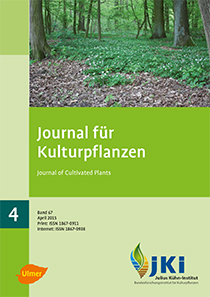Identification of <em>Agriotes</em> wireworms – Are they always what they appear to be?
Keywords:
Wireworm, Agriotes, species identification, morphology, PCRAbstract
Wireworms are internationally recognized as economically important pests with the most damaging wireworms in middle European arable land belonging to the genus Agriotes. From the five species of greater importance in Germany, three (A. lineatus, A. obscurus, A. sputator) are very difficult to identify in their larval stage. Precise identification is crucial when trying to determine whether there are ecological differences between these three widespread species, e.g. in the reactions to different soil types, to soil moisture or in food choice. We report on the differentiation of A. lineatus, A. obscurus and A. sputator wireworms by comparing the identification by morphological traits of the larvae with the identification by PCR using a part of the mitochondrial DNA. Morphological traits given in commonly used identification keys for wireworms were not always reliable. Likewise the PCR did not always produce results, in part due to cross reactions. Therefore we developed new primers for reducing cross-reactions previously encountered. In the following, samples from different populations from the three species were compared to investigate if the proportion of aberrant specimens differed at different locations.
DOI: 10.5073/JfK.2015.04.03, https://doi.org/10.5073/JfK.2015.04.03
Published
Issue
Section
License
The content of the journal is licensed under the Creative Commons Attribution 4.0 License. Any user is free to share and adapt (remix, transform, build upon) the content as long as the original publication is attributed (authors, title, year, journal, issue, pages).
The copyright of the published work remains with the authors. The authors grant the Journal of Cultivated Plants, the Julius Kühn-Institut and the OpenAgrar repository the non-exclusive right to distribute and exploit the work.







